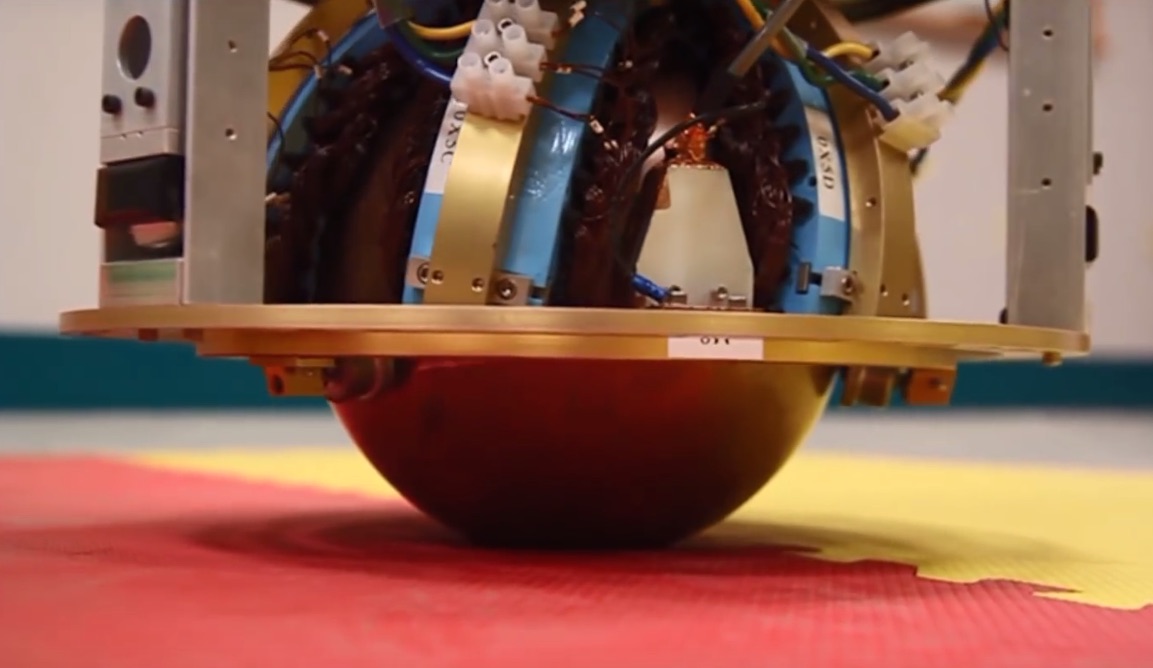In the world of robotics, innovation often emerges from unexpected shapes and designs. Enter Carnegie Mellon University’s latest marvel, the ‘Ballbot.’ Capturing the imagination with its resemblance to the lovable BB-8 from the Star Wars franchise, this spherical robot offers more than a mere visual appeal—it showcases an evolutionary leap in robotic engineering that could redefine mobility in robots. While it may not spin in the same way as its cinematic counterpart, its groundbreaking functionality makes it a pioneer worth exploring.
The Secret Behind Its Movement
At first glance, you might presume that a robot sporting such a spherical shape would possess complex mechanics to facilitate its movement. Surprisingly, the Ballbot boasts minimal moving parts, specifically two, if one includes the ball it rolls on. Even then, the design suggests that it essentially operates without any traditional moving mechanisms—an innovative feature that sets it apart from many of its predecessors.
Its origins can be traced back to a design created by Ralph Hollis over a decade ago. The initial concept revolved around mechanical rollers that controlled the sphere’s motion. Imagine a typical mouse: the rollers inside translate motion into movement. However, over time, these rollers faced wear and tear, necessitating frequent replacements and recalibrations, proving to be a cumbersome hurdle in robotic mobility.
Induction Motors: A Groundbreaking Advancement
Instead of sticking with mechanical rollers, the team at Carnegie Mellon made a pivotal decision—introducing an induction motor to drive the sphere. This novel method involves magnetically propelling the sphere via solid iron with a copper shell, utilizing stators akin to other induction motors. The result? Significantly reduced wear, improved motion control, and a smoother operation overall.
- Enhanced Durability: By eliminating the mechanical rollers, the design minimizes the risk of deterioration, thus increasing longevity.
- Improved Control: Adjusting voltage and magnetic forces allows for precise movements and direction changes.
- Stability Compensation: The onboard systems ensure that the Ballbot maintains an upright position, even when nudged or pushed—a feature that many traditional robots lacking a spherical design struggle with.
A Laboratory Marvel with Potential Applications
While the SIMbot remains in the experimental phase, its unique characteristics are likely to pique interest across various fields. The concept of omnidirectional motion can have significant implications for environments where traditional wheeled or legged robots may fall short. Imagine its application in dynamic settings such as healthcare facilities, elderly care, or even factories where flexibility and agility are critical.
Nonetheless, the journey of transforming the Ballbot from lab-bound experimentation to practical applications is just beginning. As researchers delve deeper into enhancing its capabilities, the possibilities could be endless, inspiring a new generation of robotics that may finally break free from the constraints of conventional designs.
Conclusion: The Future is Here
Carnegie Mellon University’s ‘Ballbot’ represents a fascinating step forward in the field of robotics. By leveraging advancements in induction motors, this spherical wonder not only challenges traditional robotic designs but also presents exciting opportunities for practical applications in the future. With its impressive ability to navigate and manipulate its environment, the Ballbot could very well lead the way toward a new era of mobility in robotics.
At **[fxis.ai](https://fxis.ai)**, we believe that such advancements are crucial for the future of AI, as they enable more comprehensive and effective solutions. Our team is continually exploring new methodologies to push the envelope in artificial intelligence, ensuring that our clients benefit from the latest technological innovations. For more insights, updates, or to collaborate on AI development projects, stay connected with **[fxis.ai](https://fxis.ai)**.

